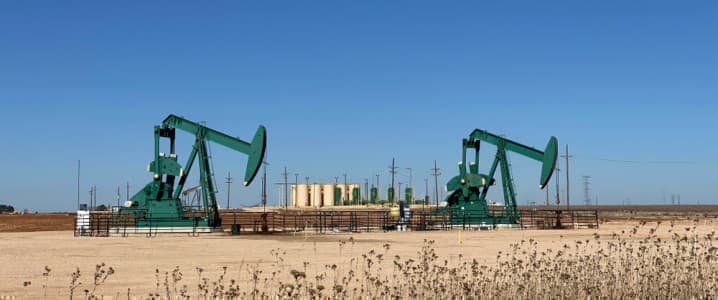Last year, U.S. unconventional oil production contributed 7.8 million barrels daily to global supply. This unconventional production—shale oil—had already turned the United States into a new swing producer and a challenger to OPEC. Now, this is changing.
Before, U.S. shale producers spent their time working to see just how much oil they could pump out of the ground if they really put their minds to it. Costs did not matter. Neither did cash returns for investors. The big prize was always around the corner.
The U.S. became the world’s largest oil producer. It could move prices the way OPEC did. And then came the pandemic, and everything fell apart, with oil prices briefly swinging below zero. Those were U.S. oil prices.
No industry could come out of such a trial without learning a lesson, and U.S. shale indeed learned a lesson. Investors helped, too. They decided they didn’t want to wait for the prize around the corner any longer. They wanted their money now after years of patience.
The industry was not exactly flush with options. It had to tighten its belt and change its strategy. And that’s exactly what it did. Only this time, unlike in previous downturns, it did not begin to loosen the belt the moment things began to look up.
Indeed, things began to look up perhaps more quickly than many expected. Russia’s invasion of Ukraine last year sent oil prices soaring, and with them, demand for U.S. oil from Europe. U.S. drillers could return to “Drill, baby, drill” with a clear conscience. But they didn’t. Because they’d grown up.
The troubled time of the pandemic appears to have taught the U.S. shale producers that the boom-and-bust cycle does not have to be devastating at the bust stage. They could prepare for it with the money made during the boom instead of spending it on bringing the bust sooner rather than later.
That’s what the shale industry is doing right now. It has retained its capital discipline from the pandemic period, it has paid down its debt load from the profits it made last year, and it is approaching any production expansion with previously uncharacteristic caution.
Of course, there is the issue of high-quality inventory that industry executives have been warning about for a while now. The expectation is that U.S. shale oil output is nearing a natural peak due to resource depletion. Not everyone agrees, but for now, producers are clearly in no rush to challenge the peak expectations.
And why would they if they are constantly reminded that the future energy system belongs to wind, solar, and EVs, and their product is about to become obsolete? Few rational thinkers believe this will be the case, and yet the industry, with its newfound caution, is preparing, like every grownup industry would.
“The E&P companies’ investment case is based not on growth prospects, which was what mattered in the early years of the shale boom, but on returning cash to shareholders,” Wood Mackenzie Vice Chair for the Americas, Ed Crooks, wrote in a recent opinion piece.
The industry has rearranged its priorities, in other words, in a sign of reaching maturity, Crooks argued. It does not mean production growth will go away entirely. In fact, U.S. shale oil production will rise this year, next year, and the year after. It will just rise more modestly, according to both Wood Mac and other forecasters, including the EIA.
In the two last pre-pandemic years, U.S. shale boosted total oil production by over a million barrels daily annually. This year, production growth is largely seen at around 700,000 bpd. This rate of growth, according to Wood Mac, is set to remain relatively unchanged in the next two years—even though demand projections for the period are quite bullish.
If last year’s prices failed to tempt shale drillers into pumping themselves into oblivion, this year’s prices will definitely fail, too, and nobody seems to expect Brent at $100 for next year. Even if it does rise back to $100, shale drillers will likely remain cautious. It must be that inventory they are running out of. And that’s bad news for oil consumers.
“The atrophy of once-booming sweet spots has big implications for the global oil market, which years ago could count on rapidly growing U.S. oil production to blunt the effects of supply disruptions and rising demand,” the Wall Street Journal wrote in March this year.
A mature U.S. shale oil industry is excellent news for investors in that industry, but it’s not such excellent news for oil-importing countries that can appreciate a cheap barrel that used to be made cheap by those same shale drillers’ rather childish ambition to see just how much oil they can pump out of the ground.
By Irina Slav for Oilprice.com
More Top Reads From Oilprice.com:
- Sanctioned Goods Are Sneaking Into Russia Through Kazakhstan
- Europe To Face Offshore Wind Tower Deficit By 2028
- Guyana Prioritizes Production Growth Over OPEC Membership



















This has far less to do with financial discipline and overwhelmingly far more to do with the fact that the sweet and lucrative spots in the shale plays have been already exhausted forcing drillers to move to poorer and more costly-to-produce spots thus causing a rise in production costs and a decline in production.
Dr Mamdouh G Salameh
International Oil Economist
Global Energy Expert